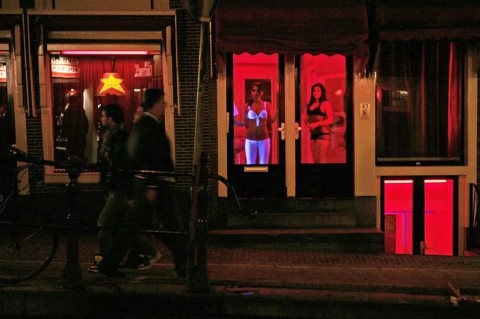The Slow Disappearance of Red-Light Windows in the Netherlands
The Netherlands, once internationally known for its emblematic red-lit windows and liberal approach to sex work, is undergoing a quiet but profound transformation. Window prostitution, once visible in dozens of towns and cities, is steadily vanishing from the urban landscape. Where approximately 1,500 windows offered workspaces to sex workers some fifteen years ago, today only around 1,000 remain, scattered across fewer than ten cities. The retreat is not sudden, but the accumulation of decisions, policies, and cultural shifts that together signal the decline of an era.
Complex Challenges and Policy Shifts Impacting Window Prostitution
The reasons are complex. Local authorities have grown increasingly concerned about issues tied to public nuisance, organized crime, and human trafficking. In response, city councils began systematically closing premises. In some cities, window prostitution was banned outright, while in others, real estate formerly used for sex work was repurposed into residential or commercial use. In certain cases, properties linked to criminal activities were seized or shut down. What was once seen as a regulated, visible, and relatively transparent form of sex work has, over time, become the focus of stricter oversight and suspicion.
Amsterdam, perhaps the most recognized symbol of the red light culture, has significantly scaled down its red light district. Hundreds of windows have been closed under city redevelopment plans aimed at reducing tourism-driven disturbances and addressing illicit activities. Although these measures have reshaped the city’s image, they have also left many sex workers without legal workplaces. Some were forced into less safe, more hidden environments, exposing them to increased vulnerability and less access to legal protection.
Another key factor in the decline of window prostitution is the digital revolution. The sex industry, like many others, has shifted rapidly to online platforms. Escorts and independent workers now operate through websites and social media, arranging meetings in private settings away from public view. The appeal of the window once a symbol of autonomy and self-advertisement has diminished in a world where discretion and digital reach are more profitable and preferred.
Declining Legal Workplaces Increase Risks for Sex Workers
Despite ongoing demand, the number of legal, safe, and visible workplaces is steadily falling. This creates tension: as window brothels close and clubs become less viable, the risk of illegal and unregulated prostitution increases. Sex workers face fewer secure options, and those who once owned or operated legal window spaces often find they cannot sell their businesses. What was once a livelihood supported by policy and legality is becoming unsustainable under mounting regulatory and societal pressure.
Looking ahead, several cities are moving to eliminate the remaining red light areas entirely, replacing them with shops, housing, or cultural spaces. In Amsterdam, a controversial proposal seeks to relocate much of the remaining sex work into a centralized erotic center on the city’s periphery. While intended to offer safety and order, many fear it could isolate workers, limit their clientele, and change the profession in ways that reduce independence and increase stigma.
The Fading Future of Window Prostitution in the Netherlands
Window prostitution in the Netherlands is not yet extinct, but it is clearly fading. What began as a pioneering experiment in legalized and regulated sex work is being steadily eroded by a mix of moral panic, urban development, and technological change. As the red lights dim and the windows close, the future of visible sex work in the Netherlands hangs in quiet uncertainty less a bold cultural fixture than a disappearing relic of a liberal past.













